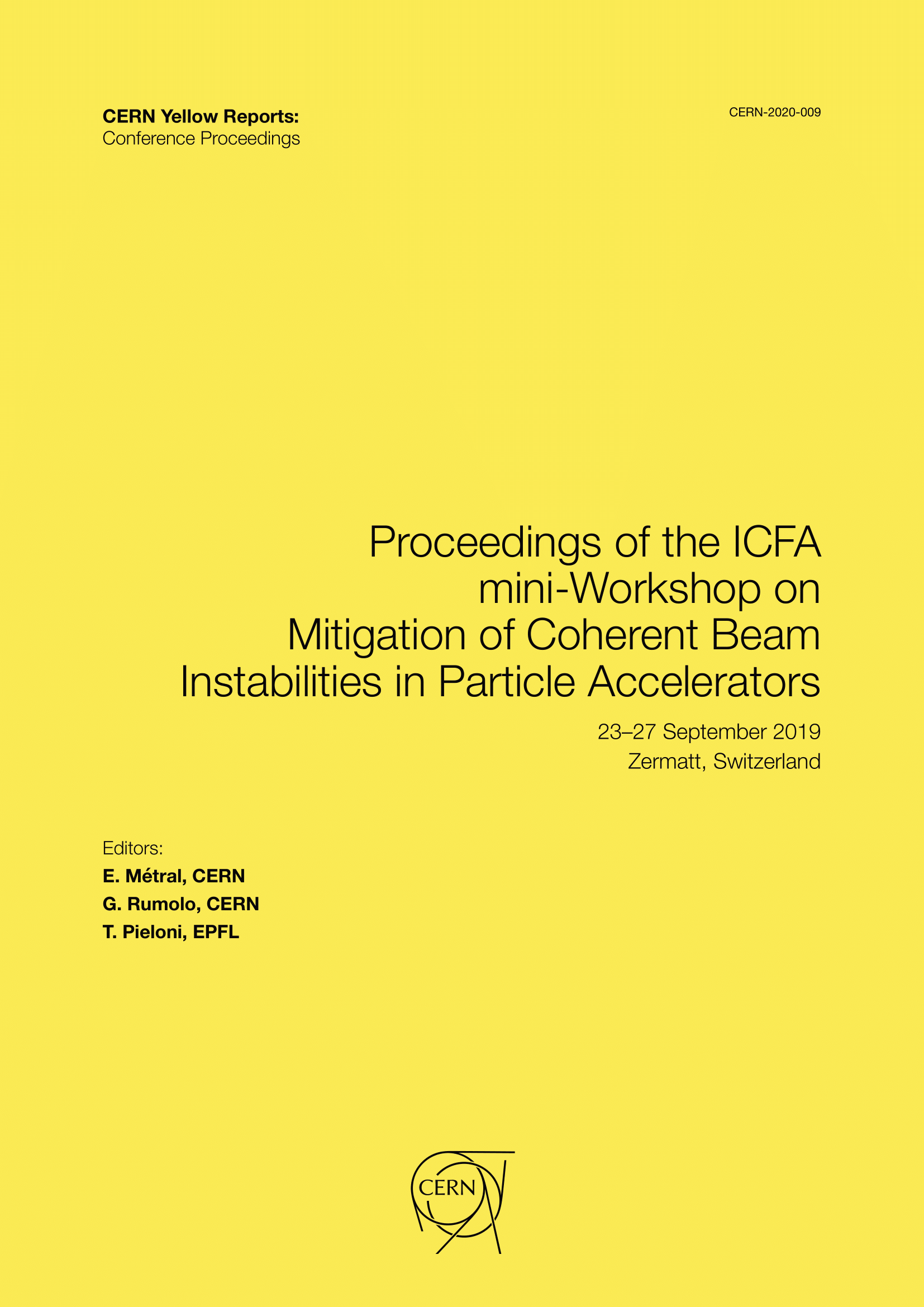Destabilising effect of resistive transverse dampers
DOI:
https://doi.org/10.23732/CYRCP-2020-009.221Abstract
A resistive transverse damper is needed for multi-bunch operation in a machine like the CERN LHC and it is very efficient as it considerably reduces the necessary amount of nonlinearities (from octupoles) needed to reach beam stability through Landau damping. However, a resistive transverse damper also destabilizes the single-bunch motion below the transverse mode coupling instability (TMCI) intensity threshold (for zero chromaticity), introducing a new kind of instability, which has been called “ISR instability” (for Imaginary tune Split and Repulsion). The purpose of this contribution is to explain in detail this new instability mechanism and its mitigation.
Downloads
Published
Issue
Section
License
Copyright (c) 2021 CERN

This work is licensed under a Creative Commons Attribution 4.0 International License.
Authors who publish with this publication agree to the following terms:
- CERN retains copyright and publishes the work licensed under the Creative Commons Attribution License 4.0 that allows others to share the work with an acknowledgement of the work's authorship and initial publication in this series.
- Authors are able to enter into separate, additional contractual arrangements for distribution of the published version of the work (e.g., post it to an institutional repository or publish it in a book), with an acknowledgement of its initial publication in this series.
- Authors are permitted and encouraged to post their work online (e.g., in institutional repositories or on their website) prior to and during the submission process, as it can lead to productive exchanges, as well as earlier and greater citation of published work (See The Effect of Open Access).

